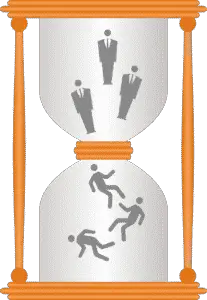
FULL POEM - SCROLL DOWN FOR LINE-BY-LINE ANALYSIS
shine through, this
is what could alter things.
Paper thinned by age or touching,
the kind you find in well-used books,
the back of the Koran, where a hand
has written in the names and histories,
who was born to whom,
the height and weight, who
died where and how, on which sepia date,
pages smoothed and stroked and turned
transparent with attention.
If buildings were paper, I might
feel their drift, see how easily
they fall away on a sigh, a shift
in the direction of the wind.
Maps too. The sun shines through
their borderlines, the marks
that rivers make, roads,
railtracks, mountainfolds,
Fine slips from grocery shops
that say how much was sold
and what was paid by credit card
might fly our lives like paper kites.
An architect could use all this,
place layer over layer, luminous
script over numbers over line,
and never wish to build again with brick
or block, but let the daylight break
through capitals and monoliths,
through the shapes that pride can make,
find a way to trace a grand design
with living tissue, raise a structure
never meant to last,
of paper smoothed and stroked
and thinned to be transparent,
turned into your skin.

LINE-BY-LINE ANALYSIS
STANZA 1
Paper that lets the light
shine through, this
is what could alter things.
Throughout the poem, the ‘paper’ at its focus can be interpreted as an extended metaphor for life. These opening lines, therefore, explore the impact of light on humanity. Literally, one could perceive this as the effect that sunlight, and perhaps with it the daytime versus nighttime, has on the human psyche. Diving deeper and acknowledging how light symbolises God across literature and religion, Dharker may be commenting on the impact that God or religion has on mankind.
Paper thinned by age or touching,
Paper thins and becomes weathered with age, akin to how human skin wrinkles. This equivalence is further evidence for the aforementioned extended metaphor throughout the poem.
STANZA 2
the kind you find in well-used books,
the back of the Koran, where a hand
has written in the names and histories,
The ‘Koran’ or Quran is the central religious text of Islam, believed by Muslims to be a revelation from God. Its inclusion here links to the idea of light as a divine symbol in the previous stanza and, following the extended metaphor, represents how life, like the Koran, is a gift from God.
who was born to whom,
STANZA 3
the height and weight, who
died where and how, on which sepia date,
The speaker describes how people have documented the lives of people they knew in the back of the Koran. Such records demonstrate the importance of paper as such documentation outlives those who were written about and those who wrote about them, thereby connecting generations – building a bridge between them that would otherwise be severed with time.
pages smoothed and stroked and turned
transparent with attention.
The repetition of ‘and’ in this line, an example of polysyndeton, emphasises the extent to which the paper is handled, hence worn out, over time. The alliteration between ‘smoothed’ and ‘stroked’ creates a careful softness to this interaction. Metaphorically, this represents the care and affection that humanity should endeavour to share with each other, as stated in holy texts like the Koran.
STANZA 4
If buildings were paper, I might
feel their drift, see how easily
they fall away on a sigh, a shift
in the direction of the wind.
The speaker’s hypothesising of buildings being built out of paper in this stanza commentates on the fragility of human life. The human body is made up of trillions of cells, smaller scale collections of which make up human tissue such as ligaments or tendons (it is this comparison that gives rise to the poem’s deeper meaning). In this stanza, Dharker explores the parallels between this intricate, delicate makeup of the human body to the fragility of buildings constructed from paper. How vulnerable the resulting structure would be to external forces, particularly the wind, is a metaphor for how humanity is at the mercy of the omnipotent natural world.
STANZA 5
Maps too. The sun shines through
their borderlines, the marks
that rivers make, roads,
railtracks, mountainfolds,
The ‘borderlines’ inscribed on maps physically represent the division between neighbouring regions or countries. Metaphorically, they refer to differences in humanity whether it be geographically, racially, sexually, or otherwise. The ‘sun shining through’ such ‘borderlines’ or differences is a warm, comforting symbol used by Dharker as a message that, although progress must still be made, unity can be found amidst such differences.
STANZA 6
Fine slips from grocery shops
that say how much was sold
and what was paid by credit card
‘Fine slips from grocery shops’ refer to receipts from a purchase. These and ‘credit cards’ are financial symbols, emphasising the major role that money plays, it could be argued unnaturally so, in people’s lives in the 21st century.
might fly our lives like paper kites.
Dharker uses this simile to illustrate the control that money has over people, comparing its power to the grasp that a person has on a flying kite. It’s a thought-provoking image as, although a person holding a kite has the influence on it not to let it fly away, the movement of the kite in the wind is largely out of their control. Thinking of the kite as a metaphor for humanity and the person holding it as financial obligation, the fact the kite gets buffeted by the wind signifies the continued presence and power of mother nature, even amidst the highly developed society of the 21st century.
STANZA 7
An architect could use all this,
place layer over layer, luminous
script over numbers over line,
and never wish to build again with brick
In this stanza, Dharker explores the importance of paper versus brick as a tool for humanity. The ability to record thoughts and emotions on paper is viewed as more valuable than the utilitarian nature of brick as a material, prompting this hypothetical architect to ‘never wish to build again with brick’.
STANZA 8
or block, but let the daylight break
through capitals and monoliths,
through the shapes that pride can make,
find a way to trace a grand design
Once again the ‘daylight’ is a religious symbol – in this context referring to God as the almighty creator, orchestrating the ‘grand design’ that was the creation of the world and humanity. This links to the idea of the seven days of creation in Christianity.
STANZA 9
with living tissue, raise a structure
never meant to last,
In these lines, the speaker describes that God’s creation of ‘living tissue’, and therefore humanity, was ‘never meant to last’. This refers to the mortality of the human race and just how fleeting an individual’s existence is in the grand scheme of the universe as a whole. The ultimate message is humbling – although mankind feels important and influential, the impression we ultimately make on the universe around us is negligible.
of paper smoothed and stroked
and thinned to be transparent,
STANZA 10
turned into your skin.
This final, isolated line reveals the deeper meaning of the poem of paper as an extended metaphor for humanity explicitly. The direct address to the reader creates a personal tone as Dharker highlights that the messages throughout the poem apply directly to the reader, making them more profound. The full stop that concludes this line and the poem creates a sense of finality, designed to mirror the finality of death and hence the mortality of mankind – arguably the poem’s key take-home message.


